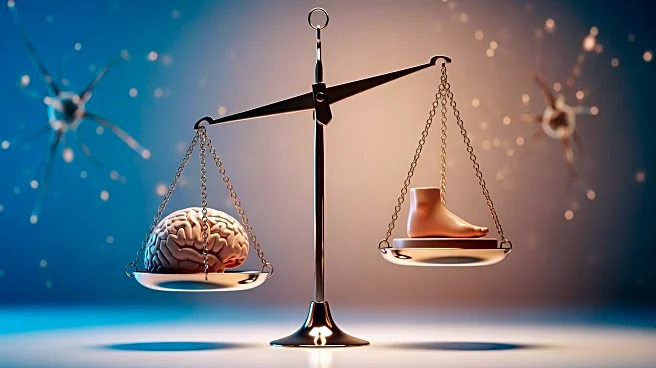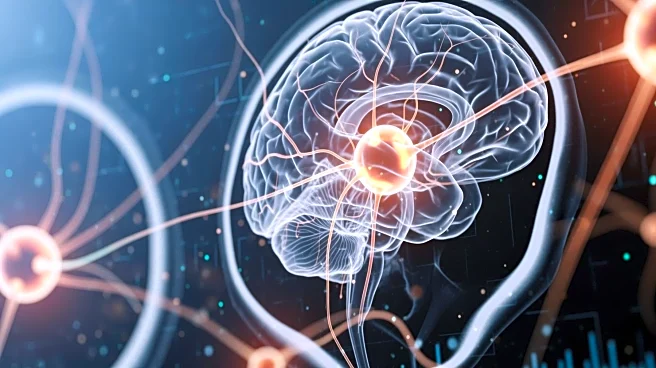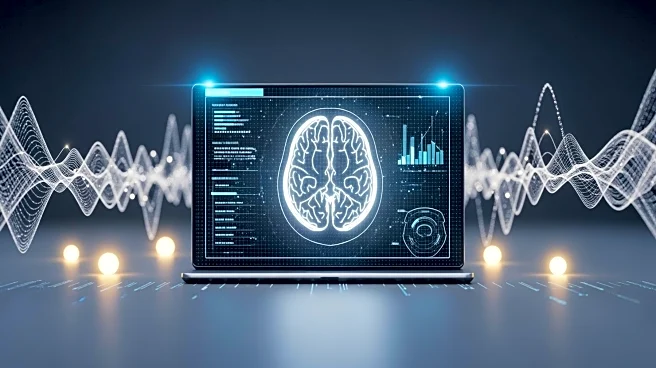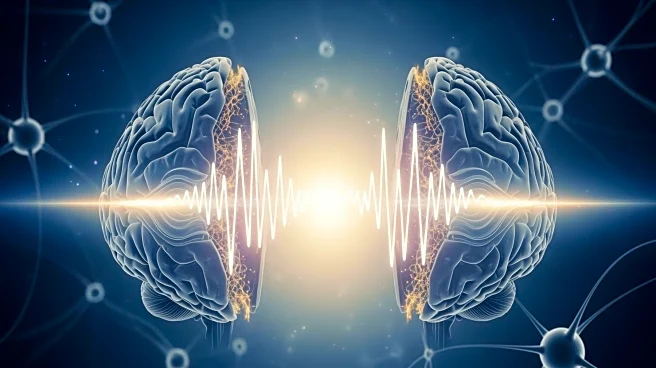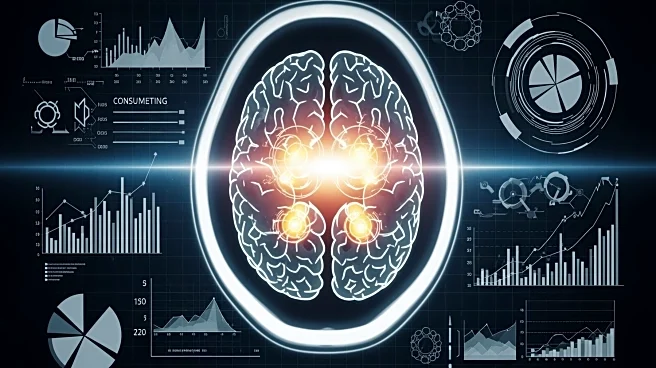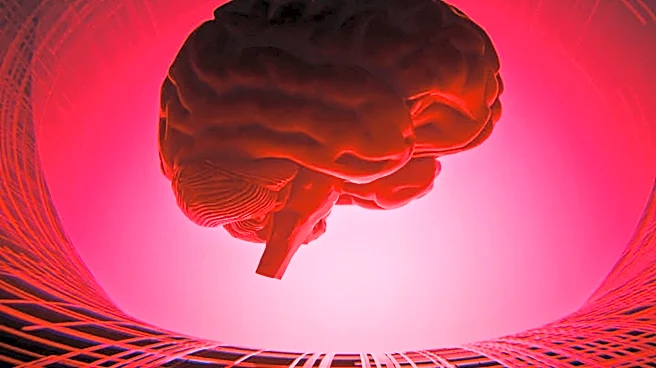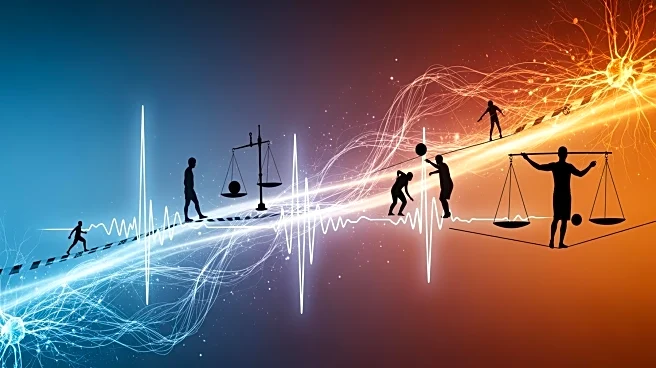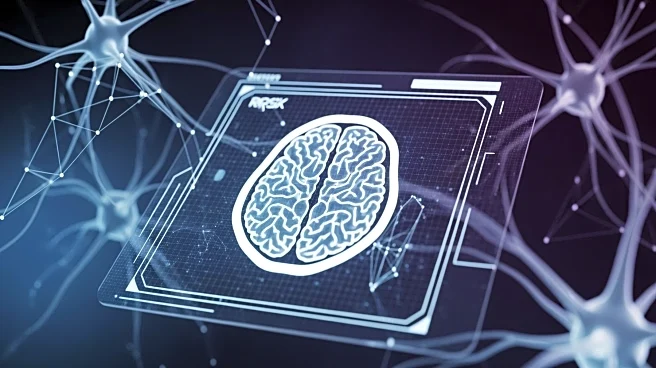What's Happening?
A study conducted by Leipzig University explored the relationship between somatosensory-evoked potentials (SEP), resting-state theta power, and acute balance performance. The research involved 25 healthy participants who underwent SEP and EEG measurements,
followed by slackline-specific balance tasks. The study found significant correlations between SEP amplitudes, theta power, and balance performance, suggesting that neural signals play a crucial role in physical balance. The findings indicate that individual differences in neural activity can affect balance, providing insights into the neural basis of motor control.
Why It's Important?
Understanding the neural mechanisms behind balance performance has significant implications for clinical rehabilitation and sports training. The study's findings could lead to improved therapeutic strategies for individuals with balance disorders, enhancing recovery and performance. By identifying the neural signals associated with balance, researchers can develop targeted interventions to improve motor control and prevent falls, particularly in older adults or those with neurological conditions.
What's Next?
Future research may focus on expanding the sample size and exploring the effects of different balance tasks on neural activity. Researchers could also investigate the potential for using SEP and EEG measurements as diagnostic tools for balance disorders. The study opens avenues for developing personalized rehabilitation programs based on individual neural profiles, optimizing recovery and performance.
Beyond the Headlines
The study highlights the importance of integrating neuroscience with physical training and rehabilitation. By understanding the neural basis of balance, researchers can develop more effective interventions that address the root causes of motor control issues, rather than just the symptoms.
